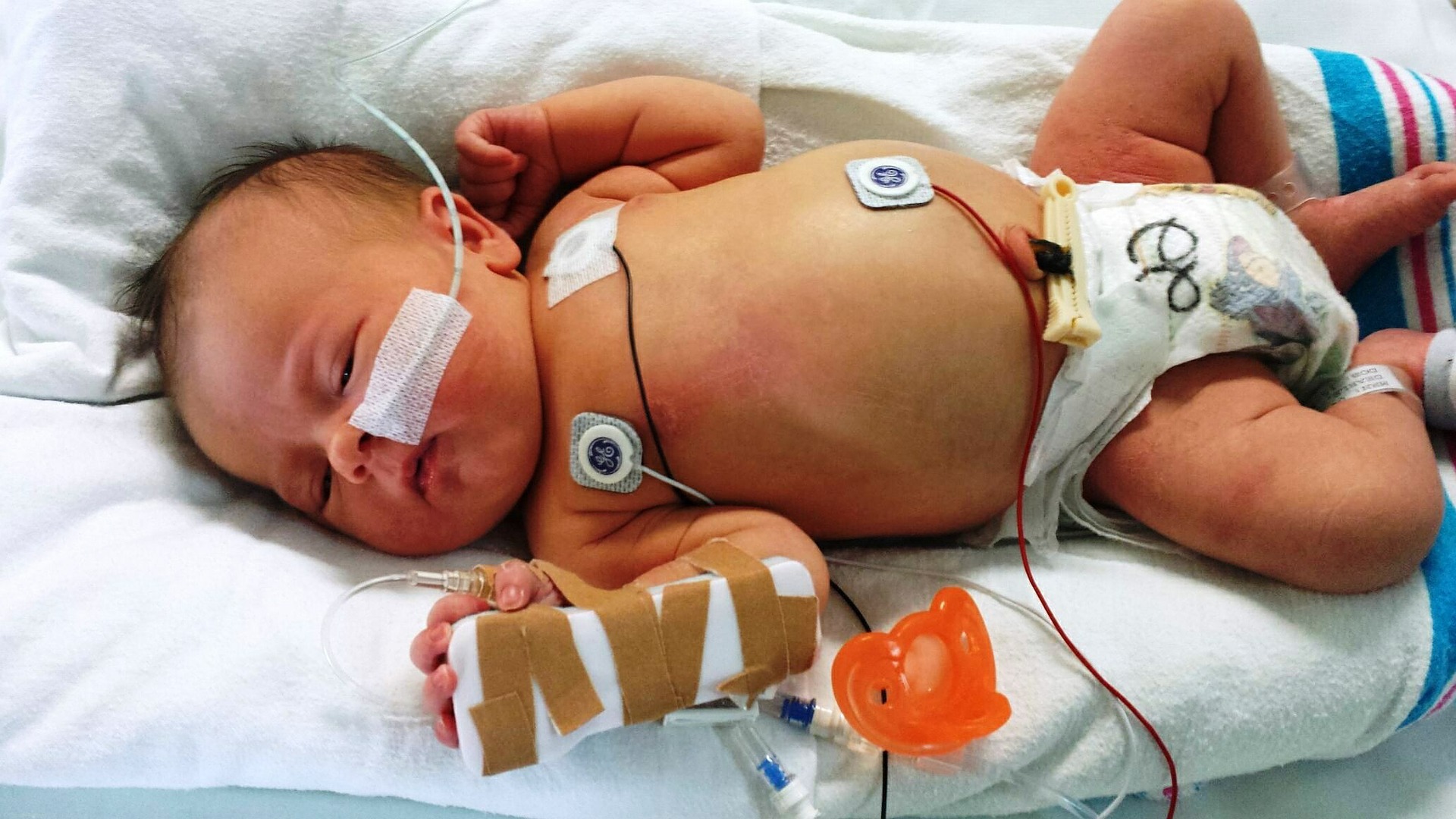Von Willebrand Disease
What is Von Willebrand Disease?
Von Willebrand Disease (VWD) is a bleeding disorder in which blood clotting does not happen easily. People with VWD either have a low level of Von Willebrand Factor (VWF) or have a mutated form of VWF which does not work properly. The protein VWF is a blood protein that has a role in bleeding. A mutated form makes it inefficient thereby leading to excessive bleeding which can sometimes be life threatening.
Von Willebrand Disease is named after the Finnish physician Erik Von Willebrand who was the first to describe the disease in the 1926.
VWD is one of the most common bleeding disorders. Nearly 1% of the global population suffer from this disease.
Patterns of Inheritance
Mutations in the Von Willebrand Factor gene causes the disease. Usually this is an autosomal dominant disorder, though in some cases it may be autosomal recessive in nature. The VWF gene is located on the short arm (p) of chromosome 12 (12p13). The VWF gene is responsible for instructions to make the blood clotting protein VWF which is needed for normal blood clotting.
The VWF acts as glue to hold blood clots together and stops the breakdown of other blood clotting proteins. If the VWF is not normal or there is too little factor, blood clotting does not happen normally leading to prolonged bleeding episodes in VWD.
- Mutations in the VWF gene which reduces the amount of VWF is type 1 VWD. People with VWD may never experience a severe bleeding event. Type 1 usually has VWF levels of around 20-50% of the normal range
- Mutations altering the function of VWF is known as type 2 VWD. People with type 2 do have bleeding events but may not be severe. Type 2 has four subtypes: 2A, 2B, 2M and 2N. In type 2 cases there is a qualitative deficiency rather than a quantitative deficiency
- Mutations leading to abnormally short, almost non-functional VWF causes the most severe type which is type 3. Most people with VWD have severe bleeding events as they have no functional blood clotting protein. They may experience spontaneous bleeds mostly in the joints and muscles
- Very rarely VWD can also be acquired in adults who suffer from autoimmune diseases like lupus. It can also be drug induced.
Von Willebrand Disease has different inheritance patterns:
- Most patients with type 1 and type 2 inherit the disease in an autosomal dominant pattern which means one copy of the mutated gene is enough to cause the disease
- Most cases of type 3, a few types of 2 and 1 are inherited in an autosomal recessive pattern which means both parents carry a copy of the mutated gene resulting in the child inheriting the disease in a severe form. Most parents who carry the disease have no signs or symptom
VWD affects both males and females

Image source: Pixabay
Symptoms and Diagnosis
Symptoms
Von Willebrand Disease symptoms vary depending on the type and severity:
- Mild bleeding from mucous membranes like nosebleeds and bleeding from the gums
- Easy bruising leading to purplish-blue splotches on the skin
- Heavy bleeding even with minor trauma such as a fall and grazing of the skin
- Gastrointestinal bleeding (rare)
- Hematomas which are solid congealing of pooled blood due to bleeding under the skin
- Hemarthrosis where bleeding occurs in the joints and muscles
- Women with VWD may present with severe, heavy menstrual bleeding
- Undiagnosed women with VWD may have heavy bleeding after childbirth even leading to death if left untreated

Image source: Pixabay
Diagnosis
Is based on symptoms, patient’s clinical history, family history and a combination of laboratory tests and genetic tests:
- Lab workup – tests to examine the clotting time and ability to form clots. A clotting factor test called assay is usually done. Platelet function tests are also recommended and show a characteristic pattern. To determine the quantity of the VWF in blood plasma, the VWF antigen test is done. VWF antigen levels may increase with stress, exercise, pregnancy etc. The normal levels also vary with the blood group. Other tests are Ristocetin cofactor assay, VWF multimers, collagen binding time. Most patients with VWD have less than 50% of the VWF in the blood. Bleeding time is a difficult test to conduct particularly in children. Factor VIII assay is done as these patients can have low levels of Factor VIII usually in the range of mild or moderate hemophilias. Some patients may even be given a diagnosis of hemophilia.
- All the tests for VWD may not be available at every center. But if a APTT is prolonged, low factor VIII, VWF antigen test, platelet function assay performed we can get some idea if VWD is likely. The exact type of VWD requires all the tests. VWD types are type 1, 2,3 and type 2 has further 4 subtypes A, B, M and N.
- Molecular testing to confirm the diagnosis and identify the defective gene mutation.

Image source: Pixabay
Current Management
While there is no cure for VWD, the condition can be managed with drugs like Desmopressin acetate which stimulates the release of VWF which is stored in the blood vessel walls. The drug also enhances the activity of Factor VIII thereby facilitating blood clotting and controlling bleeding. Desmopressin can be used through IV especially during traumatic bleeding events, before and after surgeries. Desmopressin is available usually only as an injection in India, but some patients may be able to import the nasal spray (it is not the same nasal spray used to treat diabetes insipidus).
Desmopressin (DDAVP) is the usual therapy for those with type 1 and only some cases of type 2. In type 2 VWD subtype 2B we must not give DDAVP as it will increase problems and type 3 VWD patients will not respond to desmopressin. Such cases usually require concentrated forms of VWF and Factor VIII replacement therapy. VWF and Factor VIII is distilled from the blood plasma of several donors and tested for viral infections before being administered to patients. Patients with severe forms of VWD require frequent infusions of VWF and Factor VIII. A prophylactic administration is best for severe cases prone to spontaneous bleeding events.
Hormonal birth control pills are used by women to improve VWF in the blood. These and other medicines may be prescribed in combination with other medicines to control bleeding including menstrual bleeding. Drugs like antifibrinolytics which strengthens the platelet formation is also used in VWD. Such drugs are aminocaproic acid and tranexamic acid which are used for prevention and prophylaxis.
Patients diagnosed with VWD need to avoid drugs like aspirin which affect blood clotting processes. Non-steroidal anti-inflammatory drugs are also to be avoided and blood thinners like heparin and warfarin.
In India we have plasma derived Factor VIII products that contain VWF, these can be used for VWD patients. Recombinant Factor VIII products do not contain VWF.
Recombinant Von Willebrand Factor (Vonvendi®) was approved for use in 2016 for patients aged 18 and above. This is not available in India.
Investigational Therapies
Researchers are studying the effectiveness of recombinant VWF to treat patients. This genetically engineered synthetic form is safer as it is not distilled from pooled human blood thereby eliminating all risks of viral infections like HIV, HBV or HCV.
Clinical trial studies can be located at https://www.clinicaltrials.gov/

References
Description, Types, Causes, Diagnosis, Treatment
https://www.orpha.net/consor/cgi-bin/OC_Exp.php?Lng=EN&Expert=903
https://www.cdc.gov/ncbddd/vwd/facts.html
https://rarediseases.org/rare-diseases/von-willebrand-disease/
Etiology
https://ghr.nlm.nih.gov/condition/von-willebrand-disease#diagnosis
Epidemiology
https://www.hemophilia.org/Bleeding-Disorders/Types-of-Bleeding-Disorders/Von-Willebrand-Disease
Gene Therapy
Wang, Lan, Jonathan B. Rosenberg, Bishnu P. De, Barbara Ferris, Rui Wang, Stefano Rivella, Stephen M. Kaminsky, and Ronald G. Crystal. "In vivo gene transfer strategies to achieve partial correction of Von Willebrand disease." Human Gene Therapy 23, no. 6 (2012): 576-588.
Link: https://www.ncbi.nlm.nih.gov/PMC3392614/
Standard of care guidelines
https://www.nhlbi.nih.gov/guidelines/vwd.pdf
https://www.haemophilia.org.au/HFA/daly-drjames.pdf
https://www.cdc.gov/ncbddd/vwd/guidelines.html
National Resources
Hemophilia Federation (India)
A-128, Mohammadpur (Behind Bhikaji Cama Place),
New Delhi - 110066
Email: support@hemophilia.in
Ph: +91-11-45034951/4972, +91-11-41552819
Contact Dr. Shashi Apte for any support – 098224 04983
The website of the HFI lists all the affiliated chapters according to country-wide zones: Northern Region, Western Region, Eastern Region and Southern Region. Look up the website to find your local city/town chapter.
Disease Videos
What is Von Willebrand Disease
Von Willebrand Disease
Von Willebrand Disease
Von Willebrand Factor
Keywords
Von Willebrand Disease, Von Willebrand Factor, Blood Clotting, Autoimmune, Lupus, Haematoma, Haemarthrosis, VWF Antigen Test, Fibrin Glue, Antifibrinolytic Agents, Tranexamic Acid, Desmopressin Acetate, Von Willebrand Factor Complex (Rx), Recombinant Von Willebrand Factor